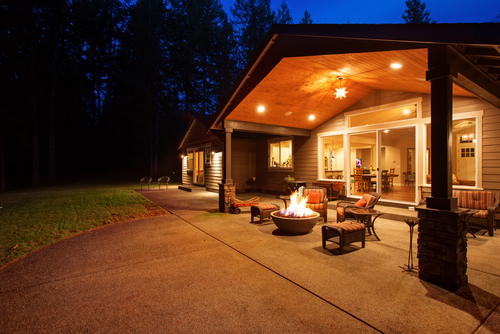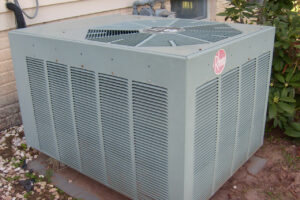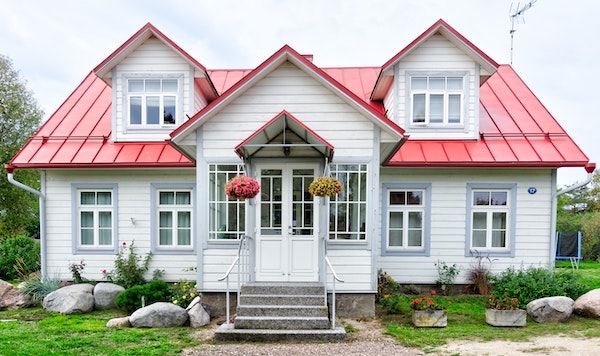
After this past year, we’re looking forward to a wonderful Connecticut summer and being together again with family and friends – in the backyard.
Adding propane outdoor appliances to your backyard can make those get-togethers even better. Santa Energy offers dependable propane delivery as well as expert tank installation.
Propane offers so many advantages over charcoal when it comes to grilling. It’s ready to grill in about a third of the time it takes a charcoal grill to get going. A propane grill gives you precise, instant temperature control. Because propane is clean-burning, there’s no smoke flavor or smell to overwhelm lighter foods such as chicken, fish, fruits, and vegetables. You don’t have to deal with messy ashes.
It can get a bit chilly sometimes after the sun goes down. But you don’t have to go inside when you have propane patio and deck heaters. They also help to extend your outdoor season to earlier in the spring and later into the fall.
Your pool and spa are major investments in your home, your family, and your quality of life. Propane pool and spa heaters let you enjoy them in comfort. They also get your water hot much faster than electric pool and spa heaters and are dramatically more energy-efficient.
Propane fireplaces and firepits don’t only make your backyard look great, they provide perfect spaces to hang out with family and friends. They provide cozy ambiance, and can also be used to roast marshmallows for s’mores. Or you can enjoy them all by yourself with a glass of wine and a good book.
If mosquitoes are sending you inside, there’s a solution. Propane insect traps use moisture and carbon dioxide to mimic human breath, luring mosquitoes away from you and into the trap where they meet their end.
Become a Santa Energy customer and get dependable propane delivery service!
 The recent heatwaves here in Connecticut may have you wondering if your home’s air conditioning is ready to take on summer. If that’s the case, now is the time to enroll in a Santa Energy A/C Energy Savings Plan.
The recent heatwaves here in Connecticut may have you wondering if your home’s air conditioning is ready to take on summer. If that’s the case, now is the time to enroll in a Santa Energy A/C Energy Savings Plan.
These service plans help you affordably maintain and repair your home’s air conditioning system.
The foundation of the A/C Energy Savings Plan is our 13-point cooling system tune-up. Our trained, experienced service technicians not only get your air conditioning system in good running order, they also thoroughly inspect the entire system. If they find a problem, they can quickly fix it before the problem can lead to a breakdown.
Unfortunately, even with the best of care, A/C breakdowns can happen. The A/C Energy Savings Plan can protect you from big repair costs with coverage that includes discounts on repairs, parts protection, and a discount on condenser replacement. You also get 24/7 emergency service and priority service and scheduling.
There’s a reason we put “energy savings” in the name of the service plan. A properly maintained air conditioning system operates at its best possible efficiency. That means your cooling energy costs will be much lower than if your home’s A/C did not get regular professional maintenance.
Our maintenance tune-up also helps to extend the life expectancy of your home’s air conditioning equipment, allowing you to get the most out of your investment before needing to upgrade.
Another benefit of our service plan is that manufacturers require regular tune-ups by a professional service technician to keep the warranty in effect. With our service plan, you may be able to protect your air conditioning’s warranty.
We offer supplemental A/C coverage for homes with more than one condenser. If you use heat pumps for cooling your home, we have a service plan for those, too!
Now is the time to make sure your home’s air conditioning is protected. Contact us to enroll in a service plan!
 When Santa Energy first began, in 1940, the only ways you could learn about us was through word of mouth or a newspaper advertisement. And if you wanted to contact us, you could either use the telephone or snail mail.
When Santa Energy first began, in 1940, the only ways you could learn about us was through word of mouth or a newspaper advertisement. And if you wanted to contact us, you could either use the telephone or snail mail.
Times have changed, and technology has changed the way business is done. That’s why we’ve updated and improved our website, to make it even better and easier for our customers to use.
Our new design is user friendly, and the new site is packed full of information and tools for a better user experience. Improvements we’ve made include:
Welcome to the New Santa Energy Website! Remember to bookmark our home page and come back often! We’ll be updating the site regularly with more information, promotions and specials, and topical blog posts.
What do you think of our new website? Get in touch with us with comments and suggestions!
 If you’ve been running the AC in your house all day and it’s not cooling your home down, not only are you wasting energy and money, but it’s probably pretty miserable inside.
If you’ve been running the AC in your house all day and it’s not cooling your home down, not only are you wasting energy and money, but it’s probably pretty miserable inside.
There are a host of reasons why your AC might not be cooling things down properly. In this blog post, we break down what could be causing your AC to malfunction, and then explain whether it is a DIY fix or one that requires calling in the pros.
If you realize your cooling system has been running but is no longer cooling things down, before you assume the worst, check this list of easy fixes first:
If none of these things do the trick, then it’s time to look at potentially bigger issues.
Here is a list of a few things that could be to blame:
If you didn’t use the correct measurements to determine what size AC unit you need to efficiently and properly cool your house down, you may be using a unit that is too small. This would be like using a garden hose to put out a massive wildland fire. It’s important to fully understand the many factors, including square footage, geographic region, insulation type, and the number of windows, that can affect what tonnage you need so you can select a better suited AC the next time around.
DIY vs. Pro: You will need to call the professionals on this one. An HVAC technician can use the right formula to determine the proper size AC unit for your use, ensuring it’s cooling the house.
Your outdoor unit isn’t a “set it and forget it” system. Just like your entire cooling and heating system, you need to visually inspect the area around the unit on a regular basis. Ensuring you have at least two feet of space around the unit allows it to run more efficiently.
DIY vs. Pro: This one you can, and should, do on your own. Remove leaves, branches, and debris from around the unit, keeping a clear space around it. You may even want to place a cover around the unit to protect it from dust, mud, and debris that could clog the unit. And, don’t forget to inspect the concrete slab the unit is sitting on to make sure it’s even, and the unit isn’t unbalanced, and running on overtime.
If the AC still isn’t operating properly after outdoor maintenance, it’s best to call in an expert for a professional inspection.
If you don’t have sufficient air coming through the vents, it won’t matter what temperature you set your AC unit at, it won’t work efficiently. There could be several reasons including dirty air filters, vents, or ducts.
DIY vs. Pro: This is a multi-arm approach to get to the root of the problem. First thing, check your air filters. This is probably one of the most overlooked tasks that should be done every one to two months. If the filters are filthy, changing them out can increase airflow and improve the efficiency of your air conditioner. You should also regularly clean your vents, which can accumulate years of dirt, grime, pet hair, and dust.
The other solution to this problem requires a call to the professionals: Cleaning your ducts is more involved and you need to have trained HVAC techs come in and make sure to do it properly, without causing further damage.
If you didn’t know, most AC systems have two separate circuit breakers for both the inside and the outside unit. If your AC is running and is blowing air, but your house isn’t cooling down, the circuit for the outside unit may have been tripped.
DIY vs. Pro: Of course, the easiest thing to do is to check your breaker box and see if the circuit is tripped on the outdoor unit. If it is, go ahead and switch it on.
If you do reset it and it trips again do not touch it again. This is when you will need to call the professionals. It’s usually indicative of a larger electrical issue that needs to be fixed by a trained technician.
If your house is not cooling properly, it may be your thermostat. The thermostat includes a sensor that tells the system what the ambient room temperature is. This temperature reading is what stops and starts the cooling cycle. If the thermostat is malfunctioning, your cooling system would not know how to function properly.
DIY vs. Pro: The root cause of the thermostat issue will determine if you can make this fix yourself, or need to call in the pros. If the display is blank on the thermostat, try changing the batteries. If that doesn’t do it, then it points to a larger issue with the electrical wiring. Now, it’s time to call in HVAC technicians for repair. It may be time for a new electrical board or a new thermostat.
Look behind the air filter at your unit’s evaporator coils. If they are frozen, the air will heat up. The ice blocks the warmth inside your home from reaching the refrigerant in the coils, which means your air isn’t cooling, and your AC isn’t able to dehumidify the air.
DIY vs. Pro: The first thing to try is something you can try on your own: turn off the cooling system for 24 hours. This allows the ice to defrost and the coils to return to normal. If the problem continues then it’s a larger issue.
Now it’s time to call the professionals who can clean your evaporator coils. They use chemicals designed to remove the dirt and grime from the coils. They take special care not to bend the fins or coils.
Think of refrigerant as the lifeblood of your AC unit. Without the proper amount, the cooling process won’t function at all. The unit needs the right amount of refrigerant to produce cool air. Refrigerant is what circulates through the evaporator coils and cools the ambient air. That cool air is then pushed back out into the home to help cool your house down. There are two main reasons for low refrigerant levels: A leak or lifetime usage.
DIY vs. Pro: When it comes to refrigerant levels, whether due to a leak or usage, you always want to call in an HVAC technician. Not only will a reputable service technician have the right tools with which to measure your refrigerant level, but they are also the only ones that can properly and safely dispose of your older, used refrigerant.
If the refrigerant is the lifeblood of your AC system, then the compressor is the heart of your AC unit. It’s responsible for pumping the refrigerant from inside your home, removing the heat from the air inside your house and moving it outside. If your compressor isn’t working, your AC unit could be running, but it won’t be cooling your house.
DIY vs. Pro: The bad news, the compressor is the most expensive part of your cooling system. So unless your unit is under warranty, you may want to consider investing in a new unit. Unfortunately, because compressors are hermetically sealed, repairs are costly, and usually involve replacing the entire compressor. A compressor issue is most certainly a job for the pros. You should not attempt this type of compressor repair on your own, or it could lead to even bigger problems.
Like every other mechanical or electrical item in your house, the AC unit has an expected lifespan. The older it gets, the more issues it will start having, and the less efficient it will become. An older unit will start to use more energy and it will take more effort to cool things down. While regular maintenance on your AC unit will help extend it’s life, at some point, you will need to replace the unit for improved cooling, efficiency, and energy consumption.
DIY vs. Pro: While you can definitely conduct your own research when it comes to purchasing a new cooling system, ultimately, you will want to consult expert help. That’s where an experienced HVAC technician can come in to answer your questions. Not only will they help determine the right size unit, but they can also answer all of your questions about thermostats and properly maintaining the unit. They will also be the ones you turn to for proper and safe installation.

(Photo/https://www.publicdomainpictures.net)
While there are several things to consider when deciding which AC unit to buy, perhaps the most important question you may be asking yourself: What size AC unit do I need?
Not only do you want to avoid wasting money on the wrong air conditioner, but you also don’t want to throw your money out the window each month, as the unnecessarily large AC unit burns up your energy bill.
Likewise, you don’t want to buy a unit that’s too small for your house, which means it will be running all the time to try and cool you down, eventually leading you to buy a second unit.
Thankfully, you can avoid guessing games and calculate the right size AC unit your house needs.
There are several things you will need to consider, all of which will affect the size of the AC unit you will need for your house:
To come up with a ballpark, the three most important numbers you need to know:
Tonnage actually has nothing to do with weight. A ton refers to the AC unit’s capacity to cool the air, in other words, how much heat the unit can remove in one hour.
That capacity is measured in BTUs or British Thermal Units. Why BTU? A long time ago, they determined it takes 286,000 BTU to completely melt one ton of ice in a 24-hour period. HVAC experts eventually divided that number by 24 hours and came up with 12,000 BTU/1-ton AC capacity.
Using that measurement, a two-ton AC unit will remove 24,000 BTUs, while a three-ton AC unit will remove 36,000 BTUs. Therefore, the more tonnage the AC unit is rated for, the more air it can cool down.
To get a rough estimate of the tonnage you will need from your AC unit, use the following calculation:
Square footage of your home x 25 (estimated energy to cool one square foot is 25 BTU) / 12,000 –1 = AC Unit Tonnage
For example, the calculations for a 1,200-square-foot home:
(1,200 x 25) / 12,000 –1 = 1.5 Tons
You would need a 1.5 ton AC unit for your house.
If you live in a drier or hotter region, don’t subtract 1.
For example, the calculations for a 1,200-square-foot home located in New Mexico:
(1,200 x 25) / 12,000 = 2.5 Tons
You would need a 2.5 ton AC unit for your house.
This table should give you an idea of what size AC unit you need, depending on the square footage of your house (located in a temperate climate region):
| Square Footage | BTUs per hour | AC Unit Tonnage |
| 450 to 550 | 12,000 | 1 Ton |
| 550 to 700 | 14,000 | 1.5 Tons |
| 700 to 1,000 | 18,000 | 1.5 Tons |
| 1,000 to 1,200 | 21,000 | 2 Tons |
| 1,200 to 1,400 | 23,000 | 2 Tons |
| 1,400 to 1,500 | 24,000 | 2 Tons |
| 1,500 to 2,000 | 30,000 | 2.5 Tons |
| 2,000 to 2,500 | 34,000 | 3 Ton |
Of course, all the other factors we previously discussed will also affect the unit you ultimately end up purchasing:
There are commonly two different types of air conditioning systems you can install in your home: a packaged unit or a split system.
The packaged unit air conditioner is the one most commonly associated with a central air system. With this system, the evaporator, condenser, and compressor are placed in one single cabinet. This cabinet is most often located on a concrete slab outside or on the roof. This type of packaged air conditioner usually includes electric heating coils or a natural gas furnace. This removes the need for an entirely separate furnace.
This type of system is most often used in homes that already have a furnace but no air conditioner installed. It’s the most cost-effective way to install air conditioning in a house.
With a split-system central air conditioning unit, an outdoor cabinet holds the condenser and compressor. An indoor cabinet holds the evaporator. This indoor cabinet may also hold the furnace.
While it’s fairly simple to come up with a rough estimate on the right size AC unit you will need for your house, ultimately, it’s safer and will save you money in the long run, if you work with an HVAC expert to determine the proper size.
Installing central air can cost you between $3,779 and $7,429, according to HomeAdvisor.com. So you want to make sure you’re buying the right unit the first time.
Getting the right unit will ensure your cooling system can perform efficiently for years, especially with regular maintenance.
 You already know how important a properly functioning HVAC system is to your family – especially on those sweltering hot days, and those freezing cold nights. Unfortunately, most of us take our heating and cooling systems for granted until it suddenly stops working.
You already know how important a properly functioning HVAC system is to your family – especially on those sweltering hot days, and those freezing cold nights. Unfortunately, most of us take our heating and cooling systems for granted until it suddenly stops working.
There are, however, several things you can do to ensure your HVAC system is not only running smoothly when you need it but will be for a long time to come. Plus, HVAC maintenance is way more cost-effective than expensive, last-minute repairs or replacement.
Read on for a money-saving HVAC maintenance checklist.
One of the best ways to save money on your HVAC system is to schedule an annual inspection with the professionals. This not only increases efficiency and performance but could extend the life of your unit. While you should be conducting visual inspections of the unit on a regular basis, having a professional come out to inspect the more intricate parts such as airflow could save you from a more costly repair later.
During the inspection, most HVAC technicians will:
This often tops the list of most-overlooked-but-helpful tasks to prolong the life of your HVAC: filter replacement.
Regularly changing your air filters can go a long way toward ensuring your HVAC system is running at optimal levels. Regularly replacing the air filters can lower your air conditioner’s energy consumption by 5-15%. Dirty air filters can block airflow, reduce efficiency, and lead to greater damage to the system.
You replace the air filter in your HVAC system every month or two, especially during high-use months. But, if you operate in dustier conditions or have pets, you may need to change them out more often.
Did you know leaky ductwork can result in a 20% to 40% loss in energy? This is why you should be checking for leaks, separated joints, stuck dampers and blocked registers. The air ducts are the backbone of your HVAC system. Sealing any leaks could mean an extra half-ton of air conditioner capacity – for free!
If you can’t remember the last time you inspected the louvers on your air vents, it’s time to clean your air vents. Years of use can cause dirt, grime, pet hair, and dust to accumulate on the vent covers.
Not only will a thorough cleaning make them look better, it will help reduce the allergens in your home, and more importantly, it will allow your HVAC system to operate more efficiently.
Visually inspect your outdoor unit on a regular basis. It’s not a “set it and forget it” system. Remove any leaves, branches, or debris that may have settled around the unit. Ensuring there is at least two feet of space will help it run more efficiently.
Consider placing a cover over the unit to protect it from dust, mud, or other debris that may clog the unit. And, lastly, make sure the concrete slab the unit is sitting upon is still even. If it’s on an uneven surface, your unit could be running on overtime.
While it may be an investment upfront, transitioning to a programmable thermostat could save you money, help your heating and cooling system run more efficiently, and ensure lower energy bills.
Turning your thermostat back 7-10 degrees when you’re away can save you up to 10% on cooling and heating costs each year.
Nearly half of your utility bill goes toward cooling and heating your home each year, according to the Department of Energy.
That’s why the last item on your HVAC maintenance checklist includes the ways you can lighten the load on your HVAC system entirely, which translates into greater efficiency and lower bills:
Taking the time to maintain your HVAC system can prevent future problems and unwelcome additional costs.
 Propane, also known as liquified petroleum gas, or LPG, is a compressed gas stored as a liquid. In addition to being non-toxic, colorless, and odorless, it’s an “approved clean fuel listed in the 1990 Clean Air Act.”
Propane, also known as liquified petroleum gas, or LPG, is a compressed gas stored as a liquid. In addition to being non-toxic, colorless, and odorless, it’s an “approved clean fuel listed in the 1990 Clean Air Act.”
Besides being cleaner and better for the environment than natural gas, propane provides greater flexibility, is reliable, and is safer to use.
Many homes around the country heat their home in the winter using propane, and now we want to talk about the ways this fuel can power your home in the summer, too.
Being able to grill outdoors is one of the special perks of a New England summer. There’s nothing like food fresh off the grill. With a propane-powered grill, there’s no waiting for charcoal to heat up, you have a more even distribution of heat while cooking, and they are much faster when it comes to clean-up. The other benefit of grilling outside on your propane grill is lower energy costs, and you’re not heating your house up during the hot summer nights.
There’s something so magical about warm summer nights when everyone is hanging out on the patio, and the warm glow from the outdoor lights creates an enchanting feel to the evening. Propane tiki torches, or fire torches, are a safe, pretty way to bring ambiance to your backyard. Just be prepared to host backyard parties where no one wants to leave at the end of the night!
Summer nights under the stars can only be ruined by one thing: pesky mosquitoes. Did you know propane mosquito traps are great ways to trap and kill mosquitoes while you’re outside? They are self-contained and use the same signals that the bugs use to find their human victims: heat, carbon dioxide, and water vapor. Propane traps create all three. A catalytic converter changes the propane into carbon dioxide and can catch thousands of mosquitoes in a week.
Propane heaters are a great way to heat not only your patio, but also your pool, spa, or hot tub. They ensure your midnight dip in the pool is always at the right temperature, and they conserve energy, all while saving you money. For any impromptu swims or hot tub parties, propane heaters will heat your water to the perfect temperature more quickly.
Patio heaters can help turn your patio into a three-season feature, rather than a one-season amenity. As opposed to electric heaters, propane-powered heaters are more efficient and cleaner for the environment. They not only can keep your family warm when summer nights start to get a little chilly, but they are also safer than wood-burning fires and electric heating appliances.
The same weather that gives us those warm summer nights also gives us those massive and often destructive summer thunderstorms. When the power goes out, a propane-powered generator will ensure your house still has power. And unlike gas-powered generators, you won’t have to worry about whether the power outage has affected gas pumps. Depending on the generator, you may be able to power your entire house, including your air conditioning unit, and your home security system.
If you are already using propane to heat your home in the winter, it makes sense to use propane to power other appliances in your house, too. Not only does it save money, but it saves you energy when you use propane to run your stove, water heater, or clothes dryer. Did you know that propane appliances can produce twice as much energy as an electric appliance, in the exact same timeframe? In addition to being more cost-friendly and energy-efficient, propane appliances won’t stop working when the power goes out during those summer storms.
Need to know how long your propane tank will last with each of these unique summer uses? Read our blog posts ‘Propane 101: How long does a propane tank last?’ and ‘How to Read a Propane Tank Gauge (With Examples)’. Or, schedule automatic propane deliveries from Santa, so you never run out!

(Photo/Unsplash)
According to the Department of Energy, three-quarters of all homes in the United States have an air conditioner. Those who don’t often struggle to find relief during those hot summer months.
In this post, we’ll break down everything you need to know about central air, and how much it can cost to install in your house.
Most simply put, an air conditioning unit removes the heat and moisture from inside your home and replaces it with cooler air.
The AC unit moves the heat inside your home, outside, consists of a:
The pump, also called the compressor, moves the heat transfer fluid (refrigerant) between the evaporator and the condenser.
The refrigerant evaporates in the indoor coil, extracting the heat from inside your home, and cooling it down. The hot refrigerant is then pumped outside via the condenser.
With a central air system, the cooling compressor is located outside your home, and the fan unit is located inside the home. The system utilizes the existing heating and cooling ductwork in your home to distribute the cool (or warm) air evenly.
Many homeowners don’t realize there are two types of air conditioning systems you can install in your home: a packaged unit or a split system.
The packaged unit air conditioner is most commonly connected with a central air system. With this system, the evaporator, condenser, and compressor are placed in one single cabinet. This cabinet is usually located on a concrete slab outside or on the roof. A packaged air conditioner usually includes electric heating coils or a natural gas furnace, which removes the need for an entirely separate furnace.
If you have a furnace but no air conditioner installed, a split-system is for you, as it will likely be the most cost-effective way to install air conditioning in your house.
With a split-system central air conditioning unit, an outdoor cabinet holds the condenser and compressor. An indoor cabinet holds the evaporator, and may also hold the furnace.
It is entirely possible to install central air in an older house; it just may take additional work from the experts.
There are two main things to consider when purchasing and installing an air conditioning unit:
Determining how much cooling your home needs depends on a multitude of factors, including:
Given that older homes have a higher level of air infiltration due to gaps in molding, doorways, loose windows and doors, it will make it harder (but not impossible) to control moisture levels and humidity.
The experts at Old House Journal, an online site that helps owners of older homes to repair, restore, and update their homes, say older homes usually do best with premium air-conditioning systems with a two-stage compressor or dual compressor, and adjustable speed blowers.
Deciding to make that investment depends on the cost to install, and whether you live in a climate where you have a longer cooling season. You should also ask:
Central air conditioning units are typically more efficient than single-room units. In addition to being quiet, convenient, and unobtrusive, they can also save you energy and money in the long run.
Even if you already have a central air conditioning unit, maybe it’s time to think about an upgrade. Newer models use up to 50% less energy to produce the same amount of cool air as the older models. That means, if you installed your cooling system 10 years ago, you could save up to 40% in energy costs by switching it out for a newer model.
If you’ve decided to install central air, it is likely to cost you between $3,779 and $7,429, according to HomeAdvisor.com.
Your final bill will depend on several important factors:
While installation is relatively uncomplicated, it’s important you don’t attempt to install central air on your own. Always work with a licensed air conditioning contractor to ensure your unit is properly installed. Experts with a license are also the only ones who can handle refrigerant chemicals.
A properly installed unit can perform efficiently for years, with annual maintenance. Improperly installed units will perform just as poorly as older, more inefficient models.
 .In the dead of winter or the heat of summer, it’s second nature for us to walk over to the thermostat and adjust the temperature to make our homes comfortable.
.In the dead of winter or the heat of summer, it’s second nature for us to walk over to the thermostat and adjust the temperature to make our homes comfortable.
Because this routine is so habitual, you probably don’t think much about the system’s technical processes. Like the one that works to ensure humidity levels in your home are optimal, or the one that filters and cleans indoor air to keep you healthy.
This comprehensive system of heating, cooling, and ventilation is also known as HVAC.
If you’re a new homeowner or haven’t worked with an HVAC company, let’s discuss what HVAC is, how it works in your home, and where to go if your HVAC system needs repairs.
The acronym HVAC stands for:
Think of HVAC as multiple systems that:
HVAC systems consist of different layers and methods of output. Meaning, HVAC isn’t only about central air conditioning or central heating, though these are two of the most common systems.
Let’s explore each part of the system.
You have several system options for heating your home, including furnaces, heat pumps, boilers, and ductless systems. For each system, there are different methods of heat delivery:
Without the ventilation component of HVAC, homeowners might notice a fluctuation in inside temperatures, and risk too much (or too little) humidity in the home, and unhealthy air quality. The most common types of ventilation systems are:
Homeowners also have a few choices when it comes to cooling their homes. The most common is using central air conditioning in conjunction with central heating, but that’s not the only solution. There are also split or ductless, window and portable units.
All AC options operate in the same way, using energy to move heat from homes and buildings to the outside.
Most air conditioning systems use:
Refrigerant moves between a liquid and gas state, and as it changes, refrigerant can absorb and release the heat outside of your home.
Because there are so many working parts and methods of operation in HVAC systems, it’s wise to give them an annual tune-up by the experts.
Preventive care of your HVAC systems can extend the life equipment and reduce costly and untimely repairs. When your HVAC systems are operating well, you can save on energy bills and keep your home’s air quality safe.
Think about all the possessions in your home. How many of them are more than 20 years old? And, of the possessions that are older than 20 years, do you refer to them as antiques?
While antiques hold precious memories and look good as decor, they aren’t always known for their functionality. (Do you plan your vacations using an old world globe?)
So with that, we ask… Is your heating oil tank an antique?
Old heating oil tanks are prone to breaking down because of oxidation and corrosion. If you let this process occur for too long, the corrosion could breach your tank shell or seams which could lead to an oil leak.
That’s why any tank older than 15 to 20 years could be classified as an antique, by our definition, and should be swapped out for a more functional and safe piece of equipment.
Decommissioning and removing heating oil tanks isn’t traditionally a do-it-yourself job. There are regulations that specify how the oil and tank must be removed to decrease the risk of spilling. Usually, the process requires a professional.
Calling in the professionals doesn’t have to be a worry. The labor takes just a couple of hours, and you can rest assured you’re following all necessary steps to safely remove your heating oil tank.
For example, a professional will:
The cost to remove your tank will depend on if you have an above ground or underground tank, and how easily accessible it is. But, the average cost to remove and replace an underground oil tank is $4,500, whereas an above ground tank costs an average of $3300.
For a more specific estimate or inspection of your existing tank, it’s best to call a professional who can help determine your needs.
Like the removal of a heating oil tank, how much it costs to install your new tank will depend on its location and if it’s above or below ground. But on average, it will cost you $1,900 to replace an oil tank.
Be cautious if you see any surprising deals.
For example, single-wall tanks might catch your eye as they average around $500 to purchase. But, cheap tanks could end up costing you more in the long run. Single-wall tanks corrode faster, because of weaker walls that allow water to settle at the bottom of the tank.
A double-wall tank is recommended. It will cost an additional $500 to $600, but it will reduce the chance of corrosion, and give you peace of mind. Most double-wall tanks also come with an alarm to warn of water leaks to the outer wall.
Important note: Selecting the right tank is important. If a leak occurs with your equipment, you could be on the hook for a hefty fine (think of $10,000 as the low end of this fine) for polluting the land.
Even with the right preventative maintenance, every oil tank has a lifespan. If you notice corrosion or rusting, clogs in your pipes or filters, or dangerous and expensive leaks, reach out to your maintenance provider immediately. It’s often the safest thing to do.